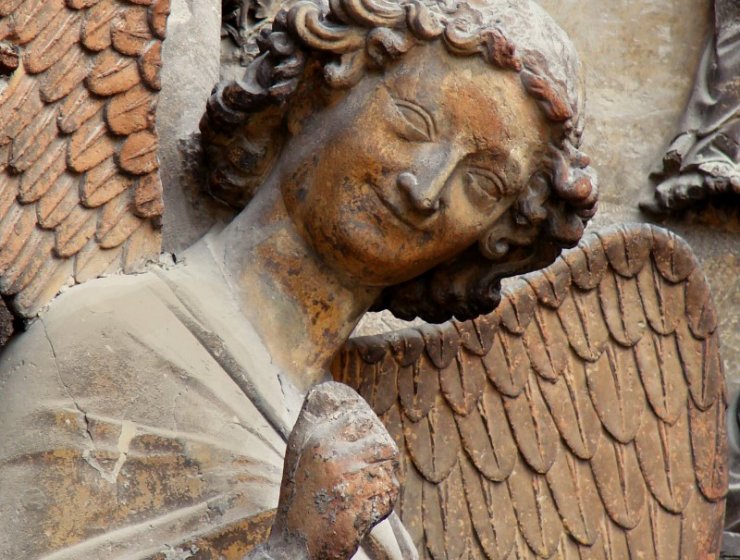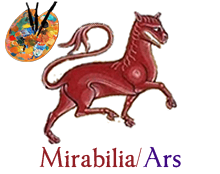
-Index-
Presentation: Art and spirituality: questions about religious iconography
José María SALVADOR GONZÁLEZ; Matheus Corassa da SILVA
Original title: Apresentação: Arte e espiritualidade: questões sobre iconografia religiosa
Idols that collapse. The memory of the cult of Apollo in the Flight into Egypt of the Holy Family
Patricia GRAU-DIECKMANN
Original title: Ídolos que se derrumban. El recuerdo del culto a Apolo en la Huida a Egipto de la Sagrada Familia
Through the iconographic analysis of two representations of the Flight to Egypt of the Holy Family, one of the fifth century and another of the fourteenth century, an attempt will be made to consider the possibility of the durability in Christian art of motifs linked to the ancient Greco-Roman religion, syncretized in the cult of Apollo settled in Egypt. Two emblematic works of this iconography will be analyzed, but chronologically and geographically opposed. They are the mosaic representation of the Flight to Egypt in Santa Maria Mayor of Rome (432) and the flemish diptych of Dijon (c. 1390), by Melchor Broederlam (c. 1355-1411). Both will serve as paradigmatic images to suspect that the presence of the ancient myths was not totally eradicated from the popular imagination, at least during the period from the Early Christianity to the Late Middle Ages. The written sustenance is found in the narrations of the earliest Apocryphal Gospels. The central theme is the plastic repetition of the presence of the idols of the temples of the god Apollo that fall from their pedestals when the Holy Child is present.
Suger (1081-1151) and the spiritual work at the Abbey of Saint-Denis (12th century)
Tainah Moreira NEVES
This essay analyses Abbot Suger’s (1081-1151) spiritual work at the rebuilding of the entrance and the choir of the Abbey of Saint-Denis (1130/1137-1144). We based our research on his writings On the Consecration of the Church of Saint-Denis and On What Was Done under His Administration, as well as on the theology of Pseudo-Dionysius the Areopagite. Furthermore, the remnant physical structure of the church was analysed to strengthen the concepts advocated by the Abbot of Saint-Denis. Our intention was to demonstrate that in supervising the rebuilding of his abbey, Suger used Art and Architecture to communicate his spiritual beliefs based on the metaphysics of the light: the spirits would ascend from the material world, thanks to Christian contemplation, to the immaterial world, towards the Light.
Musical Palimpsestism in the Sephardic traditions in the profane/sacred context in the transmission of knowledge and the perpetuation of traditions
Antonio Celso RIBEIRO
Original title: O Palimpsetismo musical nas tradições judaicas sefarditas no contexto profano/sacro na transmissão do conhecimento e perpetuação de tradições
The aim of the present work is to analyze the reuse of secular traditional melodies from the Sephardic culture with sacred texts adapted for liturgical service, hypothesizing that this procedure works well for knowledge transmission and perpetuating traditions. Disregarding any insinuation or intention of profanity in making this interchange of melody/text, profane/sacred, a convention enshrined by a custom consecrated since the Middle Ages, the main scope of this paper, both among Christians and Jews, I resort to the analogy with the technique of palimpsest – reutilization of parchment whose primitive text has been scraped or washed off to give way to another – to understand the migration of meanings between the profane/sacred genres covering en passant the concept of authorship, alterity and dialogism of the Russian philosopher Mikhail Bakhtin.
The profane in the sacred: representations of peasant life in Les Très Riches Heures du duc de Berry (15th century)
Paula de Souza Santos Graciolli SILVA
Original title: O profano no sagrado: representações da vida camponesa em Les Très Riches Heures du duc de Berry (século XV)
This work proposes to realize an iconographic analysis of the representations of the peasant life in two illuminations present in Les Très Riches Heures du duc de Berry, a book of hour richly illustrated and commissioned in 1413 by Jean de Valois (1340-1416) the Duke of Berry. The charge was initially given to the Limbourg brothers, but was only completed at the end of the 15th century by the illuminator Jean Colombe (1430-1493). We will analyze the illuminations referring to the months of July and September, where wheat and grape harvesting activities are presented respectively. To support our approach, we will start from the problematization of the notions of sacred and profane, recurrent in the visual culture of the Middle Ages, and from some reflections on the visions and interpretations of the medieval peasant.


















































































